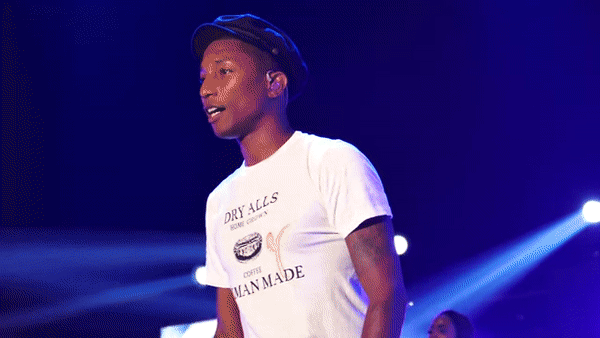Ever been to a concert in Seoul?
If you ever get to go, one aspect of the experience that is sure to stun you is the powerful unity of the crowd. The crowds will follow the lyrics with precision in accent, tone, and flow. A country notorious for high-stakes karaoke puts its developed skills to good use.
This week, I'll explain this unique phenomenon so you can prepared for your first live show in Korea!
한[韓]스팟 파드케스트 "떼창" 입니다. 스크롤을 내리면 한국말 버젼이 있습니다!
떼창 (Ddeh-Chaang) breaks down literally into two parts - “crowd” and “to sing.” It's a rather unremarkable term that has been used for decades in Korea to describe how crowds actively sing along with live performances.

Source: TimeOut
The whole affair is highly choreographed with predetermined motions and set phases for crowd involvement. You can ostensibly think of the Korean crowd as part of the show and they respect that role. The involvement isn't disruptive or chaotic in any way. Actually the opposite, it is meant to show consolidated support for the artist and even allows them moments of rest during a stream of exhausting vocal performances.
Ddeh-Chaang isn't just limited to singing either. Crowds will often prepare props like glow-sticks and banners that will appear at precise moments of a performance. In one famous surprise stunt, the crowd of Mika's 2010 performance of Paper Planes was met with hundreds of personally folded airplanes gliding towards the stage.
The more and more you watch, you realize the uniqueness of how Korean crowds act and operate. This spans from concerts to sporting events (the 2002 World Cup!) to even political protests (that had the power to remove the Head of State). I believe Ddeh-Chaang to be an iconic cultural character of Korea. What do you think?
Being Proud of a Subtle Cultural Act
I want to add a bit of personal reflection here. Crowds singing in this manner is nothing new in the Korean cultural environment. As a matter of fact, it's unremarkable and even mundane, an expected part of any performance. As such, I am certain that nearly all Koreans would not be quick to point out the act of 떼창.
But this culture became a point of pride for us when foreign performers began noting it in international media. Noel Gallagher for instance recollected Korean as being one of his most memorable tour stops exactly because of the crowd. Pharrell's facial reaction is also telling.
떼창은 한국에서 굉장히 오래된, 평범한 문화입니다. 무대위 가수와 노래를 함께 하는 것을 “떼창”이라는 단어를 써서 무언가 특별한 것처럼 이야기하는 것이 어색할 정도로 말입니다. 하지만 해외에서 가수들이 내한공연을 다녀가며 그들에게는 떼창이 굉장한 특별한 문화, 큰 관심사가 되었습니다. 노엘 갤레거의 인터뷰, 패럴 윌리암스의 표정에서도 말해주듯이요.

For me personally, this all shines a light on how we innately undervalue our own culture when we're embedded in it. It's like how you naturally eat at your favorite restaurants in your neighborhood without second thought, but the moment a friend visits, you're quick to enthusiastically champion those same great eateries as local assets.
저에게 있어서는 이것이 국내에서 우리가 너무 자연스럽게 여겨 오히려 중요시 여기지 않았던 문화에 스포트 라이트가 비춰진 경우라고 생각합니다. 자주 가던 동네의 음식점이 타지인의 방문으로 인해 엄청난 맛집이 되는것 같은 그런 일처럼 말이죠.
Korea has for a very long time underestimated its own culture. Overshadowed by the breadth of China's historical landscape and Japan's maintained artistry, Korea has had very little opportunity to present it's daily culture to the world or even really treat it as authentic culture. What we see now as Hallyu and Kpop, while it is incredibly powerful and awe-inspiring in many ways, is for me an artificial attempt to package Korea for the world.
한국은 지금까지 양 옆 두나라의 문화에 가려져 많은 상대적으로 “authentic”한 문화로 해외의 주목을 많이 받지 못한것이 사실입니다. 한류 덕분에 우리나라가 많이 알려지고 있지만 사실 이것은 정말 우리가 보여줄 수 있는것에 비하면 빙산의 일각이자 오히려 "팝" 문화만 강조하는 피상적인면에 불과하다고 봅니다.
Much like America is much more as a culture than just Hollywood or giant tech companies or McMansions, Korea is much more than the glitzy and ephemeral representation of pop-life. The little things so often get swept under the rug.
When I see and learn things like Ddeh-Chaang, I'm able to point at it proudly and say “that's the culture I am a part of.”
“떼창” 같은 단일 민족만이 가질 수 있는 문화를 보며 저는 나는 이런 한국의 피의 일부이며, 우리의 이런 문화를 세계에 더 알리고 싶다, 자부심이 듭니다.
That's it for me today. As always, Sing/Steem-on!
HanSpot Episodes
and check out my design collective @hitheryon
Episode 1: 꼰대: Kkondae // The Korean Curmudgeon
Episode 2: 성괴: Seonggwe // Plastic Monsters
Episode 3: 깡패: Kkangpeh // Korean Gangsterisms
Episode 4: 듣보잡 // Name Value
Episode 5: 팩트폭행 // Fact Violence
Episode 6: 혼밥혼술 // "Alone" Culture
Episode 7: 읽씹 // To Eat Your Texts


